Learning through the Experience of Water in Elementary School Science
Abstract
1. Introduction
1.1. Experiential Education & Learning Theory
1.2. Systems and System Models
- (1)
- How does participation in an experiential learning water unit improve student understanding of hydrological concepts and processes?
- (2)
- How does participation in an experiential learning water unit facilitate student understanding of complex systems?
2. Materials and Methods
2.1. Creating the Experiential Water Unit
Experiential Learning Framework
2.2. Participants and Setting
2.3. Data Collection & Analysis
2.3.1. Research Question One
2.3.2. Research Question Two
3. Results
3.1. Conceptual Development
“Well, once it stops raining, it will either collect, evaporate, or infiltrate. If it evaporates, once it reaches the clouds, it condensates as part of a water droplet. Then, it rains, and the cycle starts over again.” (Student #49, class#1, unit post-test, January 2017).
“The droplet travels through the rock’s pores as it descends into the earth. When it reaches the underground soil, it travels through the pores in the soil until it reaches the underground water system.” (Student #17, class#2, unit post-test, January 2017).
“We can learn the quality of the water that we tested. If it is safe to swim in or not. How much of each nutrient is in the water and if it is a normal amount.” (Student #25, class #2, science notebook, 2016).
“We can learn about dissolved oxygen and phosphate in water by doing field tests. We can also learn these things by doing water tests. We can learn how the water is to drink by a field test. Also, we can determine if the water is safe to swim in.” (Student #1, class #2, science notebook, December 2016).
“At the river we learned about how to go to a place and take samples of water as mini waves crashed around, sloshing poop-filled water. We also learned a lot about the gross trash that ends up at Hallett’s Cove which probably ends up at other polluted shores” (Student #22, class #2, science notebook, December 2016).
“Water starts from a pipe that leads to a water filter tank.” The same student responded on their post-test: “water comes from the Catskill watershed which filters water from waterbodies to my tap.” (Student #1, class #2, pre- and post-test open-ended questions, December 2016).
“Water comes from reservoirs upstate that are part of the watershed. The water is cleaned and then sent straight to the taps.” (Student #17, class #2, pre- and post-test open-ended questions, December 2016).
3.2. Systems Thinking Skills
“By building and revising our water filter we learned about how aquifers can help water get filtered if they have the right porosity.” (Student #23, class #2, water filter reflection assessment, December 2016)
“When it rains, and it runs through the forest, or in a stream with rocks, the leaves and rocks naturally filter it, like in our models, how the water flowed through the gravel.” (Student #49, class #1, water filter reflection assessment, December 2016)
“In nature we can see filtering when rainwater infiltrates into the ground like how our water infiltrated into the bottom of our filter.” (Student #26, class #2, water filter reflection assessment, December 2016)
“I think it was important to think about the layers and which order each material goes because each material has a special function that they are supposed to do in our water filter.” (Student #38, class#2, December 2016)
“After landing on the schoolyard, the water would probably either evaporate or find the nearest soil and infiltrate. Then, the water cycle starts all over again.” (Student #6, class #2, post-test, December 2016).
“The water is first collected and then filtered in a water filter system. Once they ensure the safety of the consumption of these waters, it get[s] put into a distribution system where they distribute our water to the tap.” (Student #29, class #2, post-test, December 2016)
“First, it will be on the schoolyard downstairs. Then, it will either infiltrate or runoff. If it runs off, then it will end up in the ocean and the cycle will start all over again. However, if it infiltrates, it may do the same or keep going down into the soil. This is the molecules path.” (Student #10, class #2, post-test, December 2016).
“I think it was important to think about the layers and which order each material goes because each material has a special function that they are supposed to do in our water filter.” (Student #38, class#2, water filter reflection assessment, December 2016).
“I was able to find out key points in building filters, such as the types of sediments to use, the pouring speed, the pattern, and the layers.” (Student #49, class #1, water filter reflection assessment December 2016).
“In our last filter we decided to make a pattern in our filter– sand, dirt, gravel, and then kept going and I kind of feel like layers…. because the sand um ... the sand and the color. I feel like the sand changed the color of the water. …and then it went through again and again, and it got cleaner and cleaner.” (Student #46, class #1, classroom observation, December 2016).
“How fast we were pouring the water, the sediments, and a pattern, because rain it goes across different sediments, and it comes little by little, over patterns.” (Student #49, class #1, classroom observation, December 2016)
“Our conclusion is that the third sample was the most successful because it was the least dirty. We think that the gravel played the most important role because it took all the dirty water and took out the dirt from the water.” (Student #37, class #1, science notebook, December 2016).
4. Discussion
4.1. Conceptual Understanding
4.2. Systems Thinking
5. Conclusions
5.1. Implications of Curriculum Development
5.2. Implications of Assessment
Limitations of Study
5.3. Further Research
Author Contributions
Funding
Institutional Review Board Statement
Informed Consent Statement
Data Availability Statement
Acknowledgments
Conflicts of Interest
Appendix A
| Grade & Subject 6th Grade Science 2016–2017 | Lesson Format (Check all that apply) ❏ Workshop Model X Inquiry-Based Learning | |
| Unit Title: Watersheds and Water Quality | Dates of Instruction (30 of sessions) 10 Weeks | |
| Unit Overview | This is our first unit in the study of physical science. The goal of this course is for students to engage with authentic and relevant science experience to be able to synthesize meaning out of their combined experiences, problem solve, and collaborate. In this unit, we will focus on watersheds, water quality and earth systems. This unit is a blend of the Engineering is Elementary©, Water, Water, Everywhere unit and original water lessons. | |
| Essential Questions | What processes make up the water cycle? How can we filter natural sediments? How does water flow in natural environments? Where can water runoff when it rains on our schoolyard? What is a watershed? What is the hydrosphere? How has urbanization impacted our watershed? How is water treated? How can runoff affect the water supply? What are indicators of water quality? | |
| Standards | NYS Performance Indicators: S1.1: Formulate questions independently with the aid of references appropriate for guiding the search for explanations of everyday observations. S1.2: Construct explanation independently for natural phenomena, especially by proposing preliminary visual models of phenomena. S1.3: Represent, present, and defend their proposed explanation of everyday observations so that they can be understood and assessed by others. S1. 4: Seek to clarify, to assess critically, and to reconcile with their own thinking the ideas presented by others, including peers, teachers, authors and scientists. S2.1: Use conventional techniques and those of their own design for further observations. S3.1: Design charts, tables, graphs and other representations of observations in conventional and creative ways to help them address their research question or hypothesis. T1.1: Identify needs and opportunities for technical solutions from an investigation of situations of general or social interest. 1.1: Use a range of equipment and software to integrate several forms of information in order to create good quality audio, video, graphic and text-based presentations. | |
| Knowledge & Skills | Students learn about our local watershed and how the water cycle is impeded by human development. Labs involve learning to test water quality by sampling water from various NYC waterbodies. The hydrosphere consists of all the water on the planet. Man-made infrastructure can block the natural water cycle. Green engineering can be used to mitigate the damage to the water cycle. Various natural water filtration systems exist. | |
| Unit Task | Weekly assessments of content: Reading reflections graded with standard rubric Independent Water Project Lab Reports On Demand Essay Tasks Reflection Essays Students will be expected to connect class activities to independent research on essential topics. | |
| Teamwork | Triad lab work and discussions Triad research project and presentations on green engineering Expectation is that all members will contribute to work product. | |
| Scaffolds and Extensions | Diverse texts for all students. Modified tasks when needed with specific step by step instructions and visual models. Video clips of content. Extension readings and higher-level questions. Open ended assignments. Extension work in labs, combining additional resources or testing student generated hypotheses. Teams based on student’s ability to support each other. | |
| Texts and Resources | Texts: New York City Annual Drinking Water Report, how we use Water, Water from Air, Surviving West Virginia, Newtown Creek EPA report, California Drought, why can’t we manufacture Water? Ice from Air, Lake Effect, Dead Zones. Technology: use of Chromebook in class, computers at home for homework Other resources: Science notebooks, assorted materials from FOSS kits, video clips. | |
| Lesson Objectives & Inquiry Question Schedule | ||
| Unit #1 | Unit Title: Watersheds and Water Quality | |
| Subject: Science | Dates and Duration: Fall Semester | |
| Lesson | Learning Objective | Student Work |
| 1 | Qualities of Healthy Water Teamwork protocol practice | Pretest Group created rubrics Reflection and score sheets |
| 2 &3 | Abiotic Factors LAB: Water Testing Create master data chart of abiotic factors | Readings followed by initial testing of tap water and then test samples from lesson. Add data from abiotic factors to chart Abiotic factor presentations from each group |
| 4& 5 | Modeling a Watershed LAB: What is a Watershed? Sculpting watersheds and basins. Model contamination. Content: Where do we find water? Introduction to the hydrosphere? HW: How do we use water content map | Pre-Drawing Assessment Notes on water cycle Diagram and reflection questions |
| 6 | Stream Erosion and Topography LAB: Mapping the Bronx River Structured inquiry Prepare for NYBG trip, talk about wetlands, streams, topography Create a class hypothesis | Topography kit 2 student worksheets Independent reflection |
| 7 | Field Trip: New York Botanical Garden Practice making a hypothesis using background information on abiotic factors | Sampling at various sites in garden (groups) |
| 8 | Our Water System History of NYC Water Supply, drinking and sewage | Identifying solutions and problems |
| 9 | Hudson River Snapshot Day LAB: Field Sampling at Hallett’s Cove Compare to Bronx River Introduce Fecal Coliform | Debriefing trip and writing discussion Science notebooks |
| 10 | LAB: Field sampling on the Bronx River Rocking the Boat | Sampling different abiotic factors at different stations |
| 11 | Using Field Data Field Hypothesis | Science notebook |
| 12 | Combined sewer overflow data | Science notebook |
| 13 | Field Work hypothesis | Science notebook |
| 14 | Revising your claim | Science notebook reflection |
| 15 | Lab Report | Individual lab report data worksheet |
| 16 | Permeability Explore Introduce isolating a variable, controls, etc. | Review vocabulary sheet |
| 17 | LAB: Engineering- Water Filters 1 Conduct as a controlled lab | Science notebook |
| 18 & 19 | LAB: Engineering Water Filters 2& 3 Guide through lab work | Design and re-design water filters |
| 20 | Debriefing Experimental Design and Reflection Data Analysis | Water filter assessment |
| 21 | LAB: Mapping and runoff zones Where can water runoff when it rains at our school? Students tour grounds and diagram findings | Scaled maps of schoolyards with drainage and materials marked |
| 22 | Content: Green engineering for runoff control How can urban engineers plan for runoff in the city environment? | Compare cost and effectiveness of green measures Post Drawing Assessment |
| 23 | LAB: Model Making- creating bioswales Importance of models in science | Posttest |
| 24 | Green infrastructure project (multiple days) | |
| 25 | Share Fair projects | |
| 26 | Assessment Experimental design and reflection using literature. | |
Appendix B
| Sediments and Permeability In class we explored the properties of sand, soil and gravel. What do these materials have in common? What is different? Where do we see filtering in nature? Designing a Water Filter What was important in thinking about how to design your water filter? How is your filter design similar/different to how a water system works? What were you able to learn by building and revising your own water filter? |
Appendix C
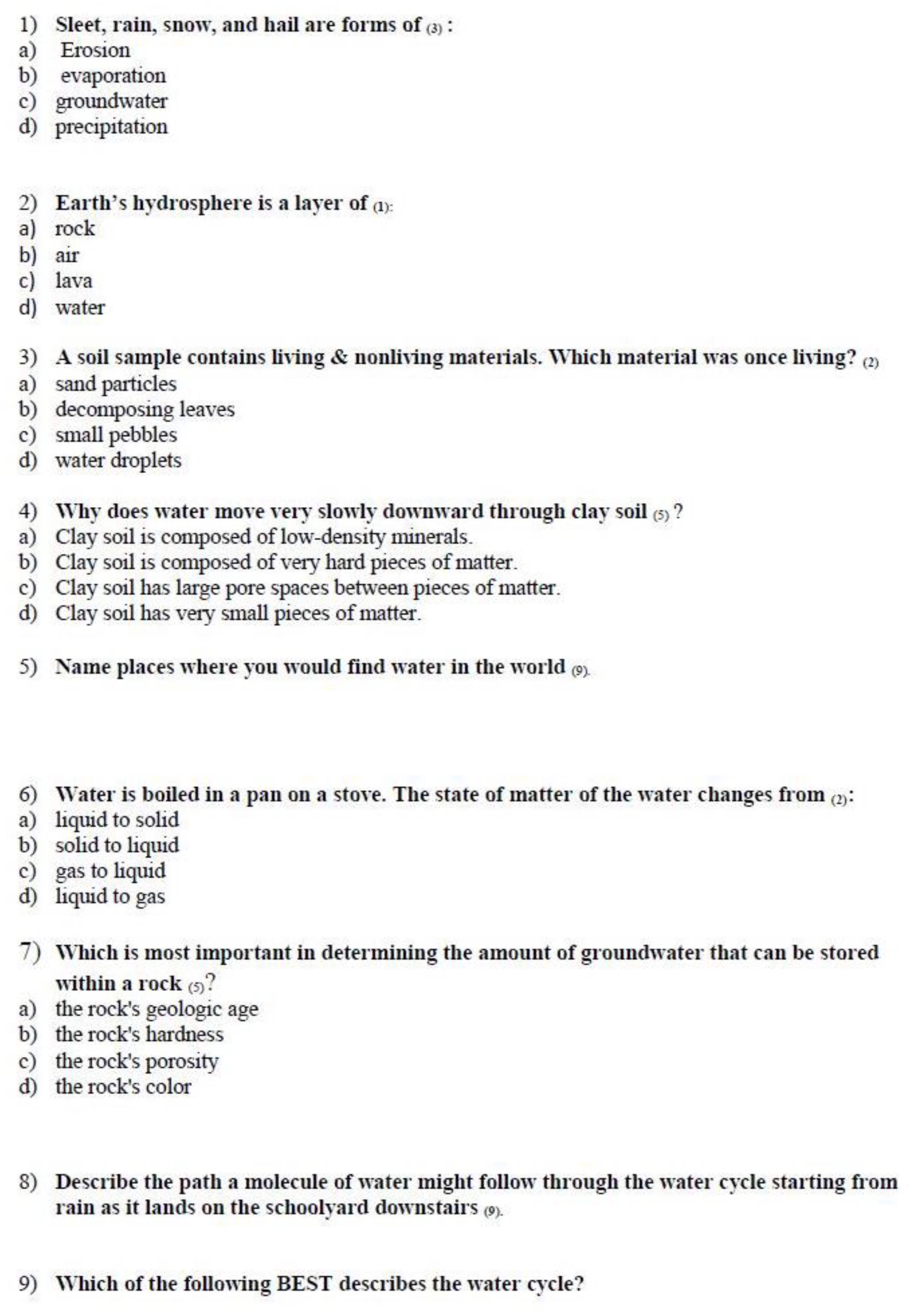
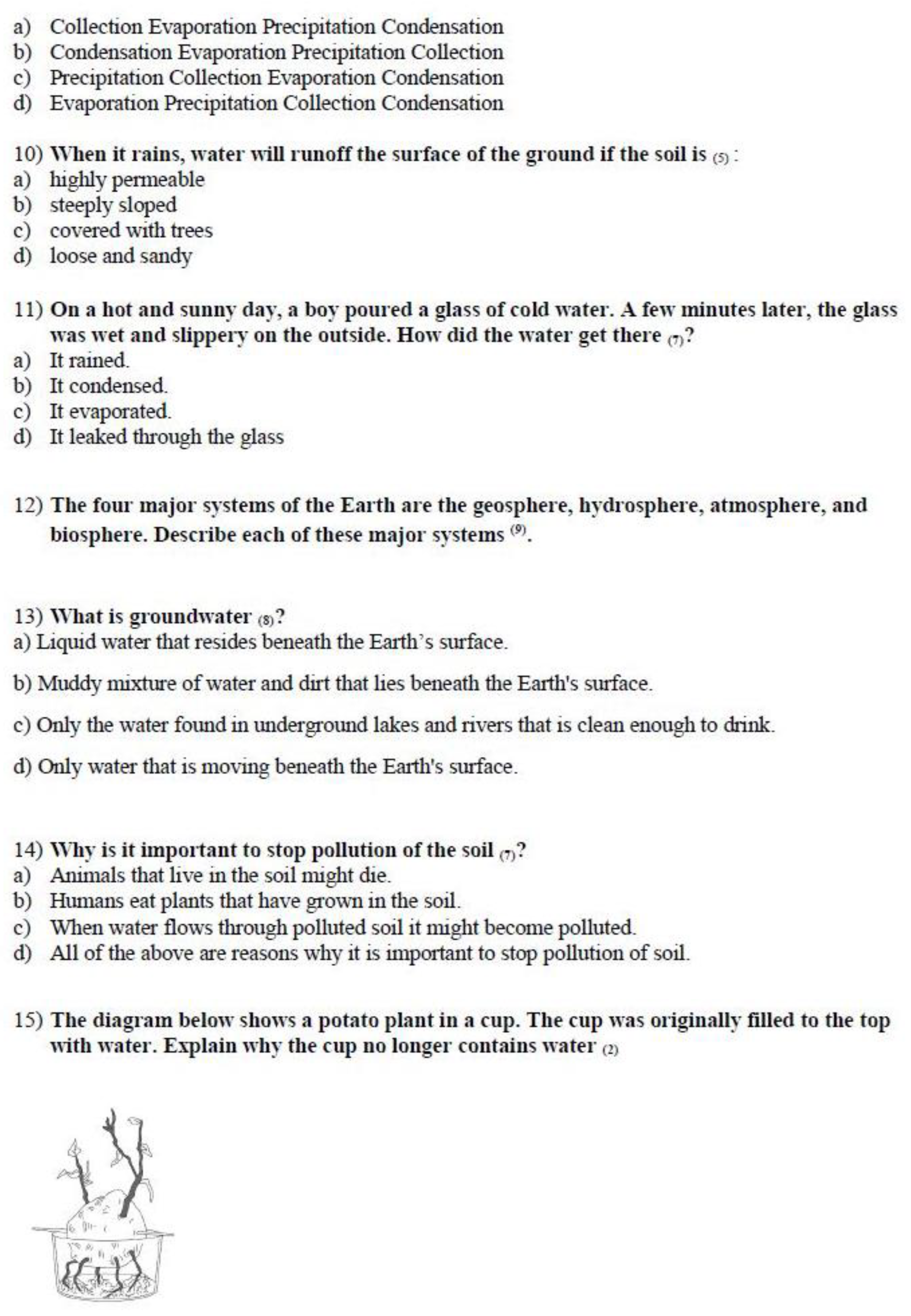
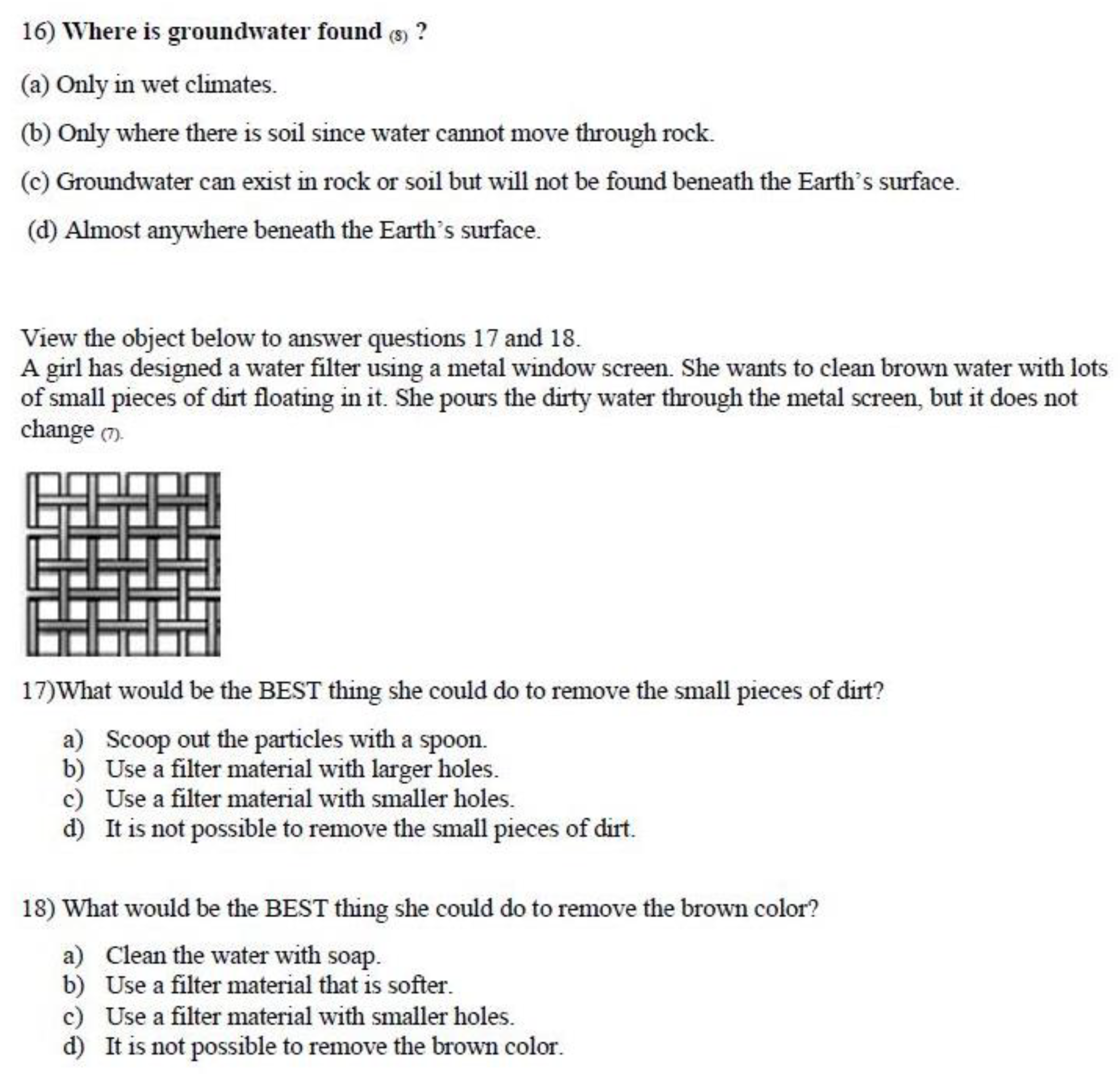
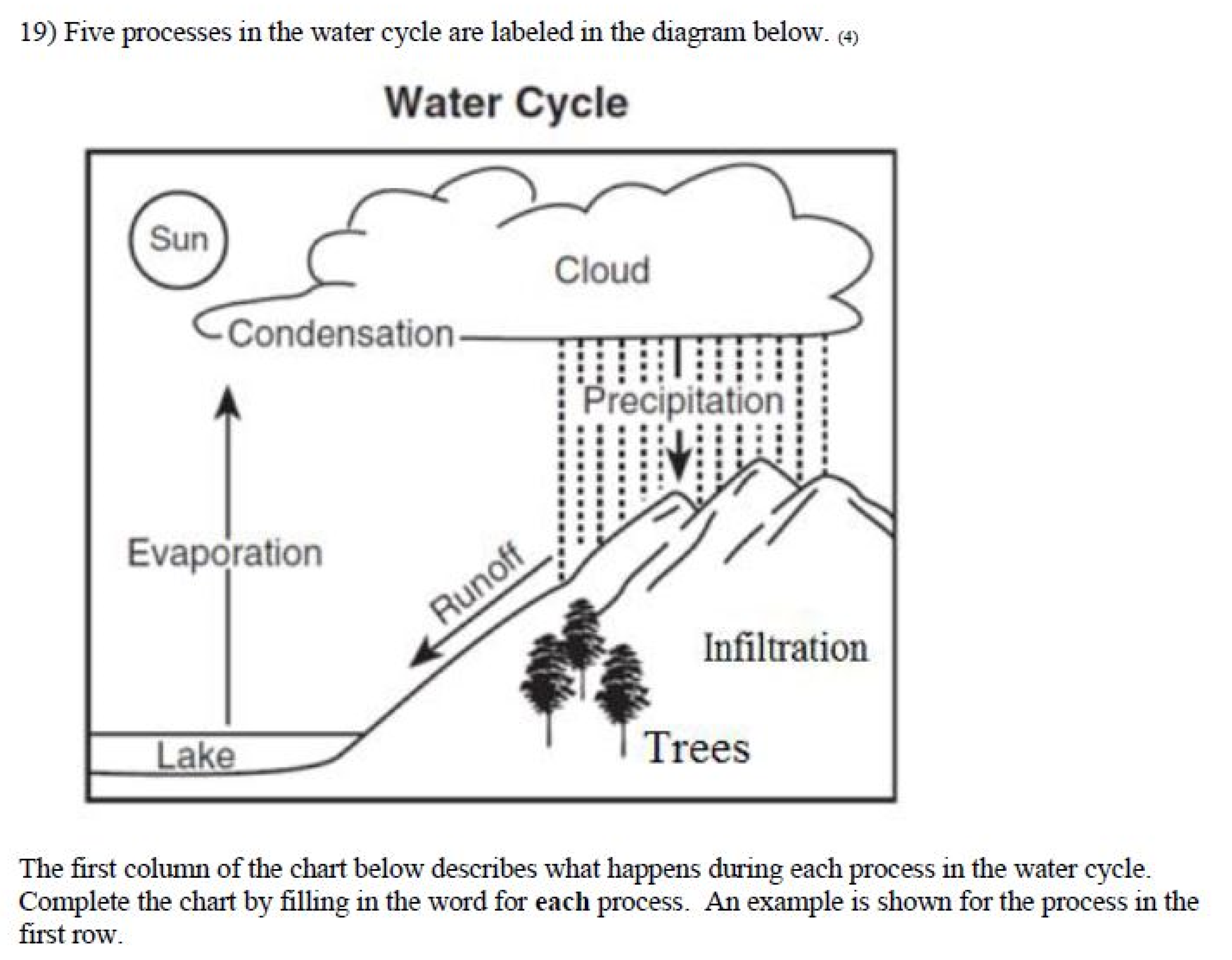


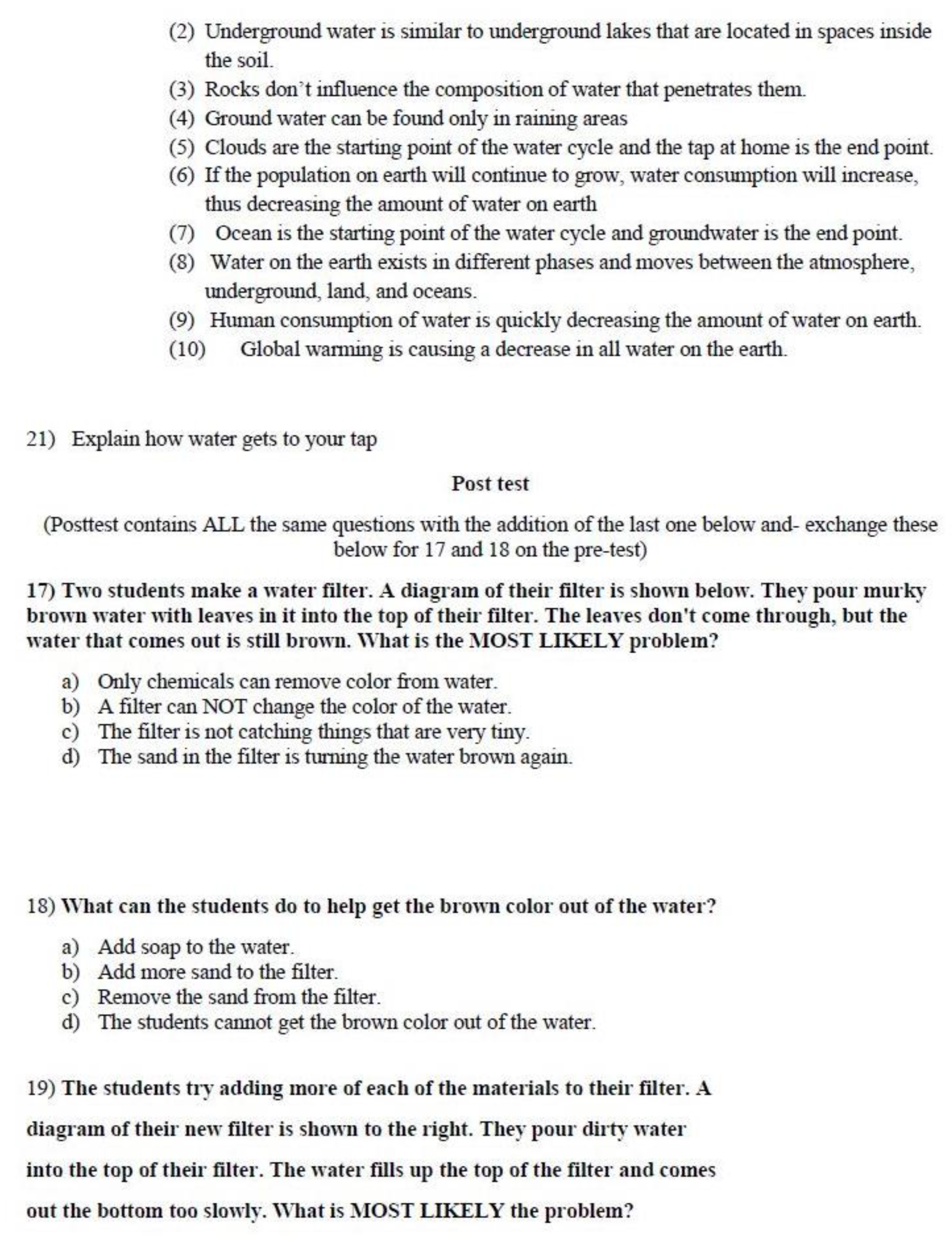
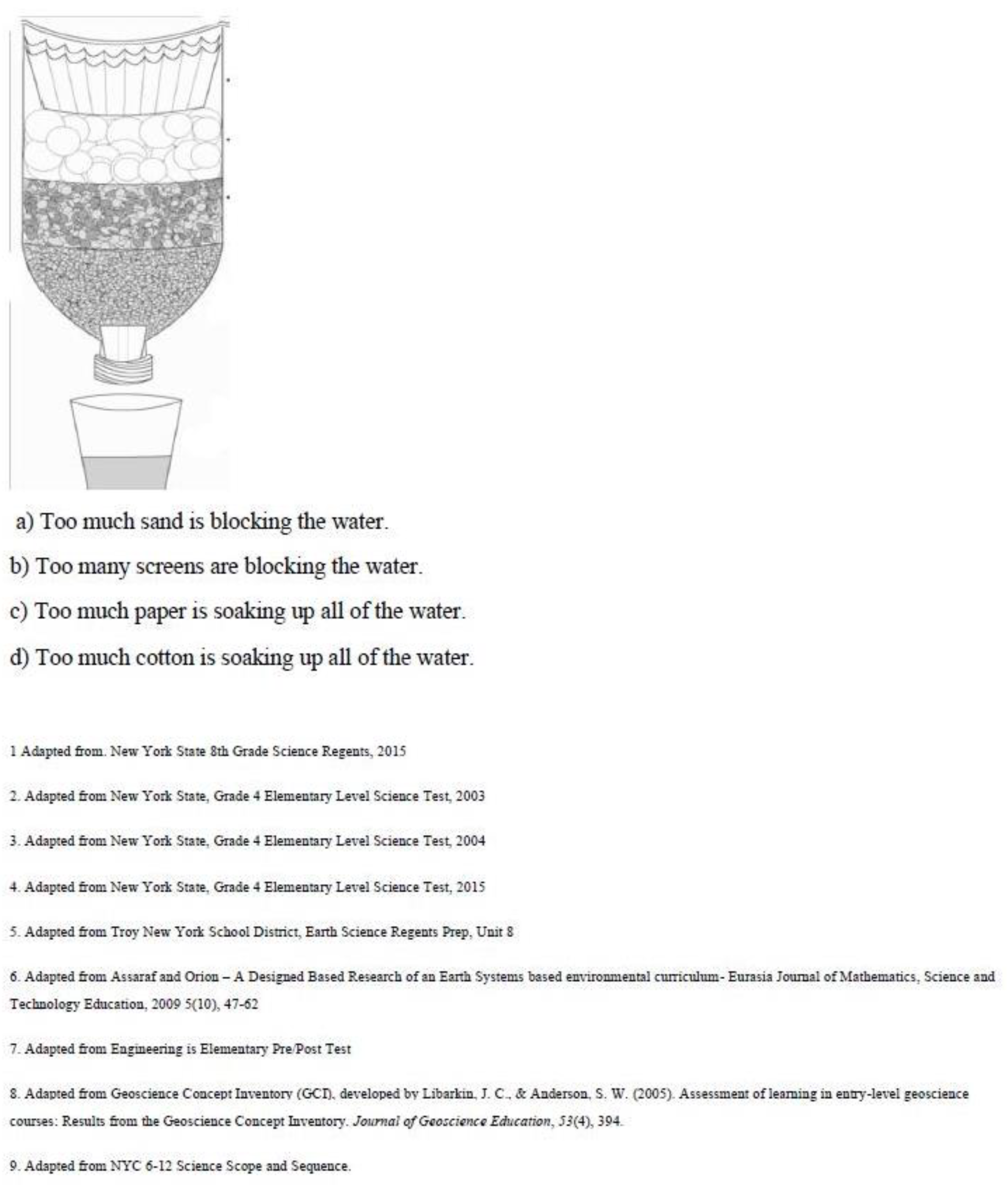
Appendix D
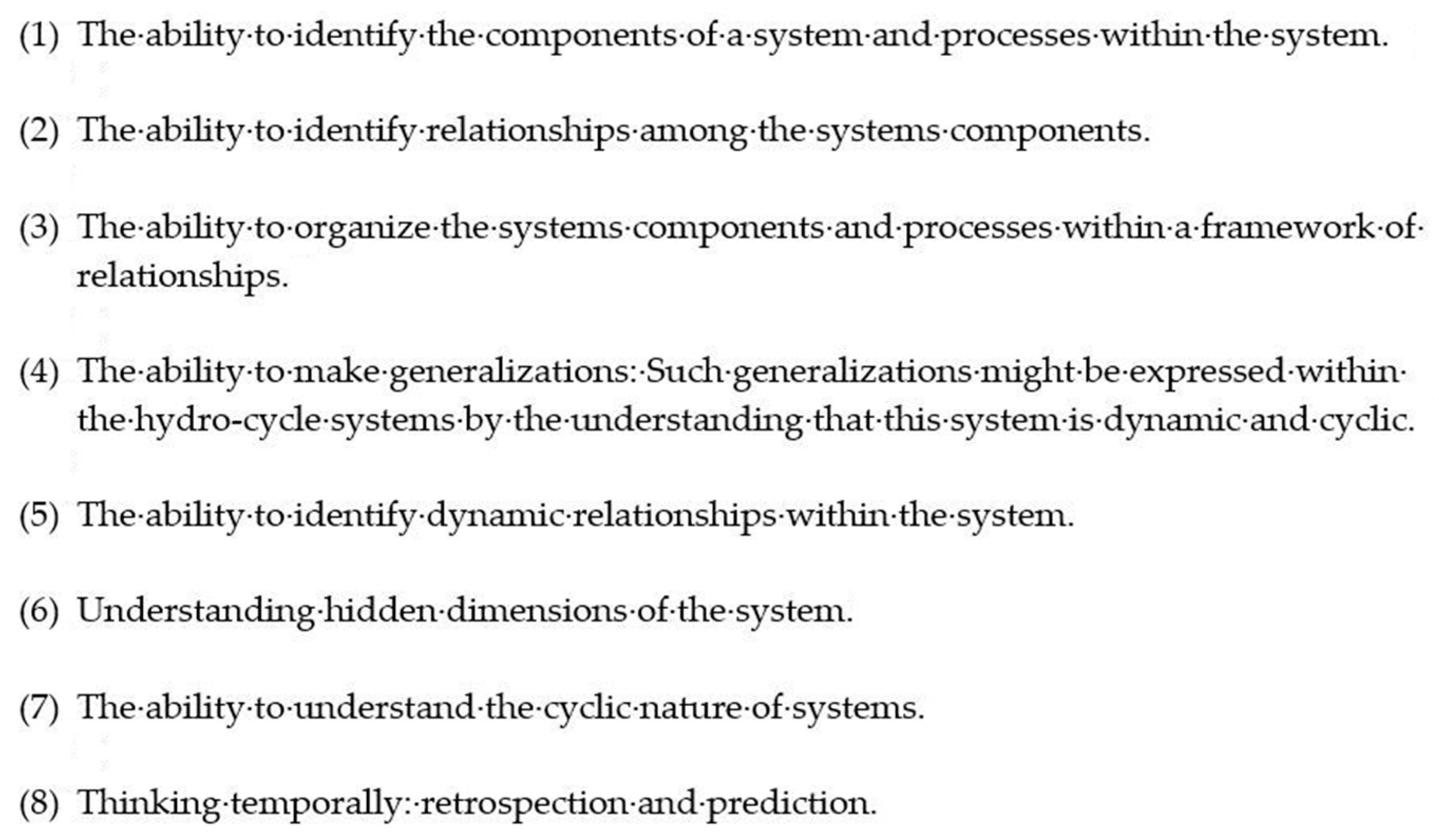
Appendix E
| Water Cycle Component | Point Value |
| Plant | 0 |
| Human | 0 |
| Animal | 0 |
| Ocean | 1 |
| River | 1 |
| Rock | 2 |
| Soil | 2 |
| Glacier | 3 |
| Spring | 3 |
| Groundwater | 3 |
| Water Cycle Processes | Point Value |
| Clouds | 0 |
| Rain | 0 |
| Sun | 0 |
| Melting | 0 |
| Evaporation | 1 |
| Surface Flow/Runoff | 1 |
| Condensation | 1 |
| Penetration | 2 |
| Underground flow | 2 |
| Dissolution ( identifies transformation from gas to liquid, solid to liquid) | 3 |
| Transpiration | 3 |
| Infiltration | 3 |
| Capillarity | 3 |
| System Relationships | Point Value |
| Structural Thinking | |
| Simple causal relationships | 1 |
| (i.e.: atmospheric- evaporation, condensation) | |
| Identifying stocks and flows (runoff, infiltration, transpiration) | 2 |
| Detailed flow structures this is rare (any mathematical annotations or measurements) | 3 |
| Dynamic Thinking | |
| Able to identify that water cycle is continuous, no beginning or end. | |
| 2 | |
| Generic Thinking | |
| Causal loops (able to identify how variables in system are interrelated- i.e.,: atmospheric- evaporation, condensation) | 1 |
| Recognizing and using stock-and-flow generic structures (runoff, infiltration, transpiration) | 2 |
| Cyclic perceptions | Point Value |
| Atmospheric cycle | 0 |
| Connection via rain on the land | 1 |
| Connection via rivers from land to sea | 2 |
| Connection via underground water flow/infiltration or plant transpiration | 3 |
References
- Ben-zvi-Assarf, O.; Orion, N. A Study of Junior High Students’ Perceptions of the Water Cycle. J. Geosci. Educ. 2005, 53, 366–373. [Google Scholar] [CrossRef]
- Assaraf, O.B.-Z.; Orion, N. Development of system thinking skills in the context of earth system education. J. Res. Sci. Teach. 2005, 42, 518–560. [Google Scholar] [CrossRef]
- Assaraf, O.B.-Z.; Orion, N. System thinking skills at the elementary school level. J. Res. Sci. Teach. 2010, 47, 540–563. [Google Scholar] [CrossRef]
- Ben-Zvi Assaraf, O.; Eshach, H.; Orion, N.; Alamour, Y. Cultural differences and students’ spontaneous models of the water cycle: A case study of Jewish and Bedouin children in Israel. Cult. Stud. Sci. Educ. 2012, 7, 451–477. [Google Scholar] [CrossRef]
- New York State Department of Education. New York State P-12 Science Learning Standards; New York State Department of Education: Albany, NY, USA, 2016.
- NGSS Lead States. Next Generation Science Standards; Achieve, Inc. behalf twenty-six states partners that Collab; National Academies Press: Washington, DC, USA, 2013; ISBN 978-0-309-27227-8. [Google Scholar]
- Singer, J.; Marx, R.W.; Krajcik, J.; Clay Chambers, J. Constructing Extended Inquiry Projects: Curriculum Materials for Science Education Reform. Educ. Psychol. 2000, 35, 165–178. [Google Scholar] [CrossRef]
- Dickerson, D.; Dawkins, K. Eighth Grade Students’ Understandings of Groundwater. J. Geosci. Educ. 2004, 52, 178–181. [Google Scholar] [CrossRef]
- Reinfried, S. Conceptual Change in Physical Geography and Environmental Sciences through Mental Model Building: The Example of Groundwater. Int. Res. Geogr. Environ. Educ. 2006, 15, 41–61. [Google Scholar] [CrossRef]
- Grotzer, T.A.; Basca, B.B. How does grasping the underlying causal structures of ecosystems impact students’ understanding? J. Biol. Educ. 2003, 38, 16–29. [Google Scholar] [CrossRef]
- Evagorou, M.; Korfiatis, K.; Nicolaou, C.; Constantinou, C. An Investigation of the Potential of Interactive Simulations for Developing System Thinking Skills in Elementary School: A case study with fifth-graders and sixth-graders. Int. J. Sci. Educ. 2009, 31, 655–674. [Google Scholar] [CrossRef]
- Cardak, O. Science Students’ Misconceptions of the Water Cycle According to their Drawings. J. Appl. Sci. 2009, 9, 865–873. [Google Scholar] [CrossRef]
- Draper, F. A proposed sequence for developing systems thinking in a grades 4–12 curriculum. Syst. Dyn. Rev. 1993, 9, 207–214. [Google Scholar] [CrossRef]
- Hmelo-Silver, C.E.; Marathe, S.; Liu, L. Fish Swim, Rocks Sit, and Lungs Breathe: Expert-Novice Understanding of Complex Systems. J. Learn. Sci. 2007, 16, 307–331. [Google Scholar] [CrossRef]
- Kali, Y.; Orion, N.; Eylon, B.-S. Effect of knowledge integration activities on students’ perception of the earth’s crust as a cyclic system. J. Res. Sci. Teach. 2003, 40, 545–565. [Google Scholar] [CrossRef]
- Shepardson, D.P.; Wee, B.; Priddy, M.; Schellenberger, L.; Harbor, J. What is a watershed? Implications of student conceptions for environmental science education and the National Science Education Standards. Sci. Educ. 2007, 91, 554–578. [Google Scholar] [CrossRef]
- Covitt, B.A.; Gunckel, K.L.; Anderson, C.W. Students’ Developing Understanding of Water in Environmental Systems. J. Environ. Educ. 2009, 40, 37–51. [Google Scholar] [CrossRef]
- Dove, J.E.; Everett, L.A.; Preece, P.F.W. Exploring a hydrological concept through children’s drawings. Int. J. Sci. Educ. 1999, 21, 485–497. [Google Scholar] [CrossRef]
- Dickerson, D.; Callahan, T.J.; Van Sickle, M.; Hay, G. Students’ Conceptions of Scale Regarding Groundwater. J. Geosci. Educ. 2005, 53, 374–380. [Google Scholar] [CrossRef]
- Lehrer, R.; Schauble, L. Cultivating Model-Based Reasoning in Science Education. In The Cambridge Handbook of the Learning Sciences; Cambridge University Press: Cambridge, UK, 2005; pp. 371–388. [Google Scholar]
- Dewey, J. Summary for Policymakers. In Climate Change 2013—The Physical Science Basis; Intergovernmental Panel on Climate Change, Ed.; Cambridge University Press: Cambridge, UK, 1938; Volume 50, pp. 1–30. ISBN 0684838281. [Google Scholar]
- Joplin, L. On Defining Experiential Education. J. Exp. Educ. 1981, 4, 17–20. [Google Scholar] [CrossRef]
- Moore, G.T.; Piaget, J. Science of Education and the Psychology of the Child. J. Archit. Educ. 1971, 25, 113. [Google Scholar] [CrossRef]
- Roberts, J. Disney, Dewey, and the Death of Experience in Education. Educ. Cult. 2005, 21, 12–30. [Google Scholar]
- Dewey, J. Experience and Education. Educ. Forum 1986, 50, 241–252. [Google Scholar] [CrossRef]
- Maloof, J. Experience This! The Experiential Approach to Teaching Environmental Issues. Appl. Environ. Educ. Commun. 2006, 5, 193–197. [Google Scholar] [CrossRef]
- Kolb, D.A. Experiential Learning-Experience as the Source of Learning and Development (2nd Edition). Englewood Cliffs, NJ: Prentice Hall, 2015. Available online: https://www.researchgate.net/publication/235701029_Experiential_Learning_Experience_As_The_Source_Of_Learning_And_Development (accessed on 27 December 2020).
- Koutsoukos, M.; Fragoulis, I.; Valkanos, E. Connection of environmental education with application of experiential teaching methods: A case study from Greece. Int. Educ. Stud. 2015, 8, 23–28. [Google Scholar]
- Cobern, W.W.; Loving, C.C. Defining ‘science’ in a multicultural world: Implications for science education. Sci. Educ. 2001, 85, 50–67. [Google Scholar] [CrossRef]
- Senge, P.M. The Fifth Discipline: The Art and Practice of the Learning Organization [Kindle Paperwhite Edition]; Currency: New York, NY, USA, 2006; ISBN 0385517254. [Google Scholar]
- Kuhn, D. Children and adults as intuitive scientists. Psychol. Rev. 1989, 96, 674–689. [Google Scholar] [CrossRef]
- New York City Department of Education. Science Scope & Sequence 2015–2016; New York City Department of Education: New York, NY, USA, 2015.
- Lachapelle, C.P.; Cunningham, C. Engineering is Elementary: Children’s Changing Understandings of Science and Engineering. Eng. Educ. 2007. Available online: https://www.researchgate.net/profile/Christine_Cunningham2/publication/252763733_Engineering_is_Elementary_Children’s_Changing_Understandings_of_Science_and_Engineering/links/5458ea860cf2bccc4912ad96.pdf (accessed on 12 December 2020).
- Dashoush, N. Establishing a Community of Practice between an Elementary Educator and a Scientist as a Means of Professional Development; Columbia University: Columbia, NY, USA, 2015. [Google Scholar]
- Levy, A. Investigating the Experience of Water: A Case Study of Teaching and Learning in Elementary School Science; Columbia University: Columbia, NY, USA, 2018. [Google Scholar]
- Hudson River Snapshot Day. Available online: https://www.ldeo.columbia.edu/edu/k12/snapshotday/ (accessed on 12 December 2020).
- Akkus, M. The Common Core State Standards for Mathematics. Int. J. Res. Educ. Sci. 2015, 2, 49. [Google Scholar] [CrossRef]
- McMillan, J.; Schumacher, S. Research in Education Evidence-Based Inquiry; Pearson: London, UK, 2014; ISBN 9781292022673. [Google Scholar]
- Creswell, J.W.; Plano Clark, V.L. Designing and Conducting Mixed Methods Research; SAGE Publications Ltd.: Thousand Oaks, CA, USA, 2017; ISBN 9781483344379. [Google Scholar]
- Merriam, S.B. Qualitative Research and Case Study Applications in Education; Jossey-Bass Publishers: San Francisco, CA, USA, 1998; ISBN 0787910090. [Google Scholar]
- Rennie, L.J.; Jarvis, T. Children’s choice of drawings to communicate their ideas about technology. Res. Sci. Educ. 1995, 25, 239–252. [Google Scholar] [CrossRef]
- Landis, J.R.; Koch, G.G. The Measurement of Observer Agreement for Categorical Data Data for Categorical of Observer Agreement The Measurement. Biometrics 2011, 33, 159–174. [Google Scholar] [CrossRef]
- Kuckartz, U. Qualitative Text Analysis: A Guide to Methods, Practice & Using Software; Sage Publications: Newbury Park, CA, USA, 2014. [Google Scholar]
- Libarkin, J.C.; Anderson, S.W. Assessment of learning in entry-level geoscience courses: Results from the Geoscience Concept Inventory. J. Geosci. Educ. 2005. [Google Scholar] [CrossRef]
- Creswell, J.W. Research Design: Qualitative, Quantitative and Mixed Method Aproaches; SAGE Publications: Newbury Park, CA, USA, 2007. [Google Scholar]
- Bogner, F.X. The Influence of Short-Term Outdoor Ecology Education on Long-Term Variables of Environmental Perspective. J. Environ. Educ. 1998, 29, 17–29. [Google Scholar] [CrossRef]
- Kuo, F.E.; Faber Taylor, A. A Potential Natural Treatment for Attention-Deficit/Hyperactivity Disorder: Evidence From a National Study. Am. J. Public Health 2004, 94, 1580–1586. [Google Scholar] [CrossRef] [PubMed]
- Kuo, M.; Browning, M.H.E.M.; Penner, M.L. Do lessons in nature boost subsequent classroom engagement? Refueling students in flight. Front. Psychol. 2018, 8, 2253. [Google Scholar] [CrossRef] [PubMed]
- Kirschner, P.A. Epistemology, practical work and Academic skills in science education. Sci. Educ. 1992, 1, 273–299. [Google Scholar] [CrossRef]
- Di Sessa, A.A. Knowledge in pieces. In Converging Perspectives on Conceptual Change; Routledge: Oxon, UK, 2017; pp. 7–16. [Google Scholar]
- Chang, N. The Role of Drawing in Young Children’s Construction of Science Concepts. Early Child. Educ. J. 2012, 40, 187–193. [Google Scholar] [CrossRef]
- Bar, V.; Travis, A.S. Children’s views concerning phase changes. J. Res. Sci. Teach. 1991, 28, 363–382. [Google Scholar] [CrossRef]
- Zangori, L.; Forbes, C.T.; Schwarz, C.V. Exploring the Effect of Embedded Scaffolding Within Curricular Tasks on Third-Grade Students’ Model-Based Explanations about Hydrologic Cycling. Sci. Educ. 2015, 24, 957–981. [Google Scholar] [CrossRef]
- Forbes, C.T.; Zangori, L.; Schwarz, C.V. Empirical validation of integrated learning performances for hydrologic phenomena: 3rd-grade students’ model-driven explanation-construction. J. Res. Sci. Teach. 2015, 52, 895–921. [Google Scholar] [CrossRef]
- Agelidou, E.; Balafoutas, G.; Gialamas, V. Interpreting how third grade junior high school students represent water. Environ. Educ. Inf. 2001, 20, 19–36. [Google Scholar]
- Wiggins, G.P.; McTighe, J. Understanding by Design (Expanded 2nd ed); Ascd: Alexandria, VA, USA, 2005; ISBN 9786468600. [Google Scholar]
- Bransford, J.D.; Brown, A.L.; Cocking, R.R. How People Learn: Brain, Mind, Experience, and School; National Academies Press: Washington, DC, USA, 2000. [Google Scholar]
- Lehrer, R.; Schauble, L.; Lucas, D. Supporting development of the epistemology of inquiry. Cogn. Dev. 2008, 23, 512–529. [Google Scholar] [CrossRef]
- Boud, D.; Keogh, R.; Walker, D. Promoting reflection in learning: A model. In Reflection: Turning Experience into Learning; Routledge: Oxon, UK, 1985; pp. 18–40. ISBN 0-89397-202-9. [Google Scholar]
- Chawla, L. Participation and the Ecology of Environmental Awareness and Action. In Participation and Learning; Springer: Dordrecht, The Netherlands, 2008; pp. 98–110. ISBN 9781402064159. [Google Scholar]
- Padilla, K. Visualization: Theory and practice in science education. Int. J. Sci. Educ. 2009, 31, 1417–1420. [Google Scholar] [CrossRef]
- Waldrip, B.; Prain, V.; Carolan, J. Using Multi-Modal Representations to Improve Learning in Junior Secondary Science. Res. Sci. Educ. 2010, 40, 65–80. [Google Scholar] [CrossRef]
- Quillin, K.; Thomas, S. Drawing-to-Learn: A Framework for Using Drawings to Promote Model-Based Reasoning in Biology. CBE—Life Sci. Educ. 2015, 14, es2. [Google Scholar] [CrossRef] [PubMed]
- Pierson, A.E.; Clark, D.B.; Sherard, M.K. Learning progressions in context: Tensions and insights from a semester-long middle school modeling curriculum. Sci. Educ. 2017, 101, 1061–1088. [Google Scholar] [CrossRef]
- Kelly, G.J.; Chen, C.; Crawford, T. Methodological considerations for studying science-in-the-making in educational settings. Res. Sci. Educ. 1998, 28, 23–49. [Google Scholar] [CrossRef]
- Schwarz, C.V.; Reiser, B.J.; Davis, E.A.; Kenyon, L.; Achér, A.; Fortus, D.; Shwartz, Y.; Hug, B.; Krajcik, J. Developing a learning progression for scientific modeling: Making scientific modeling accessible and meaningful for learners. J. Res. Sci. Teach. 2009, 46, 632–654. [Google Scholar] [CrossRef]
- Lave, J.; Wenger, E. Legitimate Peripheral Participation. In Situated Learning; Cambridge University Press: Cambridge, UK, 1991; pp. 27–44. [Google Scholar]
- Johnsonlaird, P. Mental models in cognitive science. Cogn. Sci. 1981, 4, 71–115. [Google Scholar] [CrossRef]
- Hanson, C. Indigenous Research Methodologies. Int. J. Crit. Indig. Stud. 2012, 5, 93–95. [Google Scholar] [CrossRef][Green Version]
- Kuhn, D.; Pease, M. What needs to develop in the development of inquiry skills? Cogn. Instr. 2008, 26, 512–559. [Google Scholar] [CrossRef]
- Kuhn, D.; Black, J.; Keselman, A.; Kaplan, D. The Development of Cognitive Skills To Support Inquiry Learning. Cogn. Instr. 2000, 18, 495–523. [Google Scholar] [CrossRef]
- Driver, R.; Guesne, E.; Tiberghien, A. Children’s Ideas and the Learning of Science. Child. Ideas Sci. 1985, 1–9. Available online: https://staff.fnwi.uva.nl/e.joling/vakdidactiek/documenten/driver.pdf (accessed on 12 December 2020).
- Aikenhead, G.S. Science Education: Border Crossing into the Subculture of Science. Stud. Sci. Educ. 1996, 27, 1–52. [Google Scholar] [CrossRef]
- Roberts, D.A.; Bybee, R.W. Scientific Literacy, Science Literacy, and Science Education. In Handbook of Research on Science Education, Volume II; Routledge: Oxon, UK, 2014; ISBN 9781136221972. [Google Scholar]
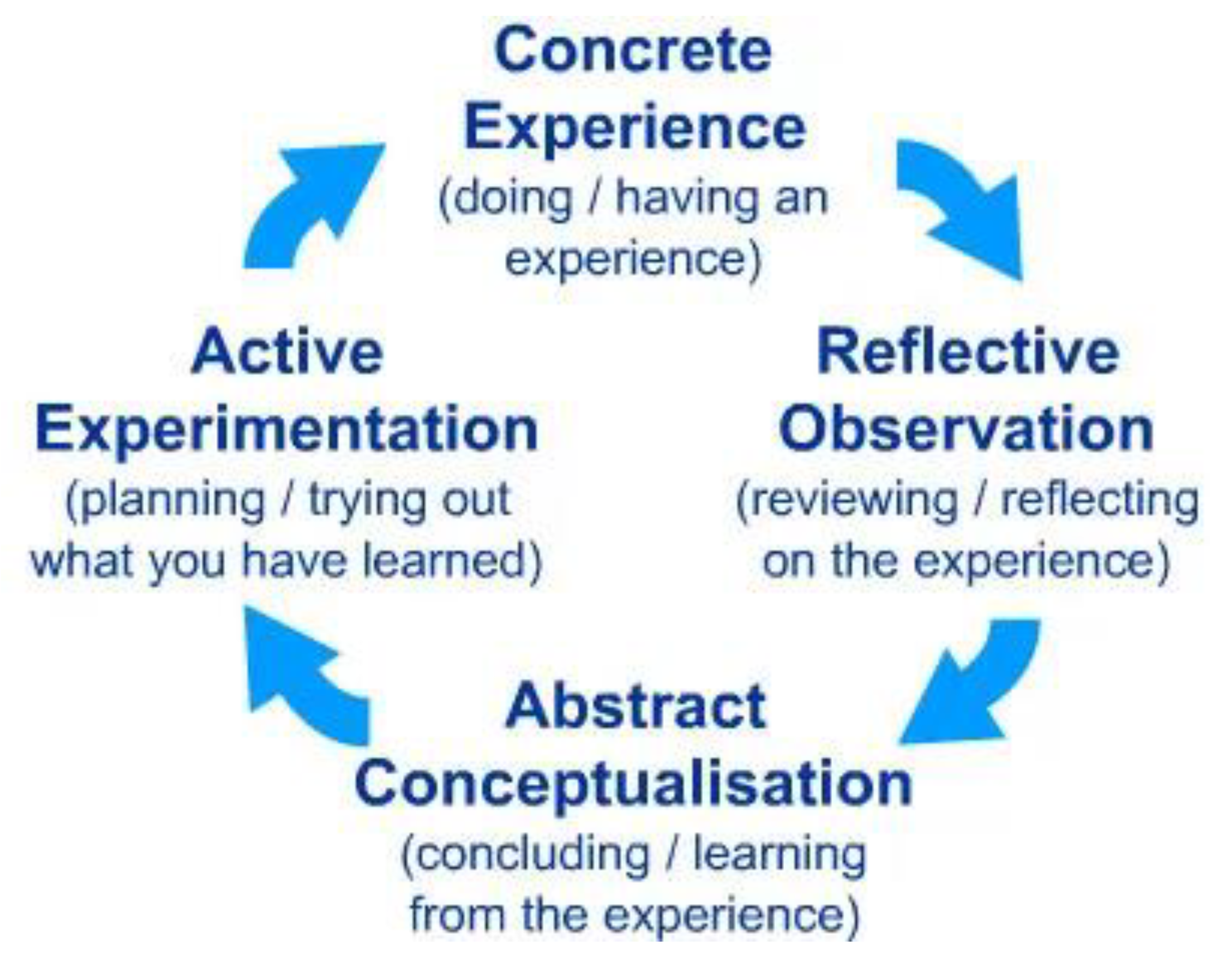
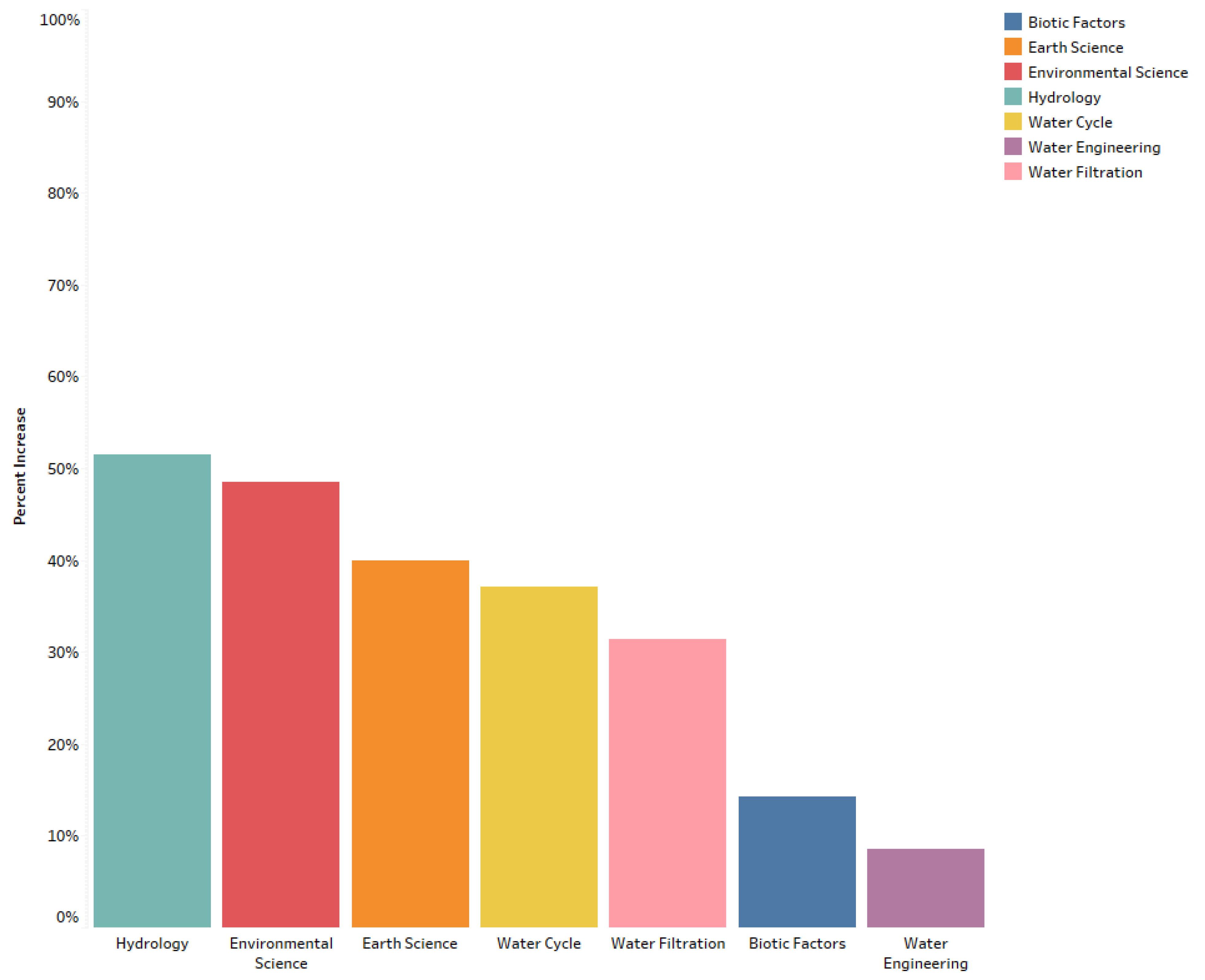
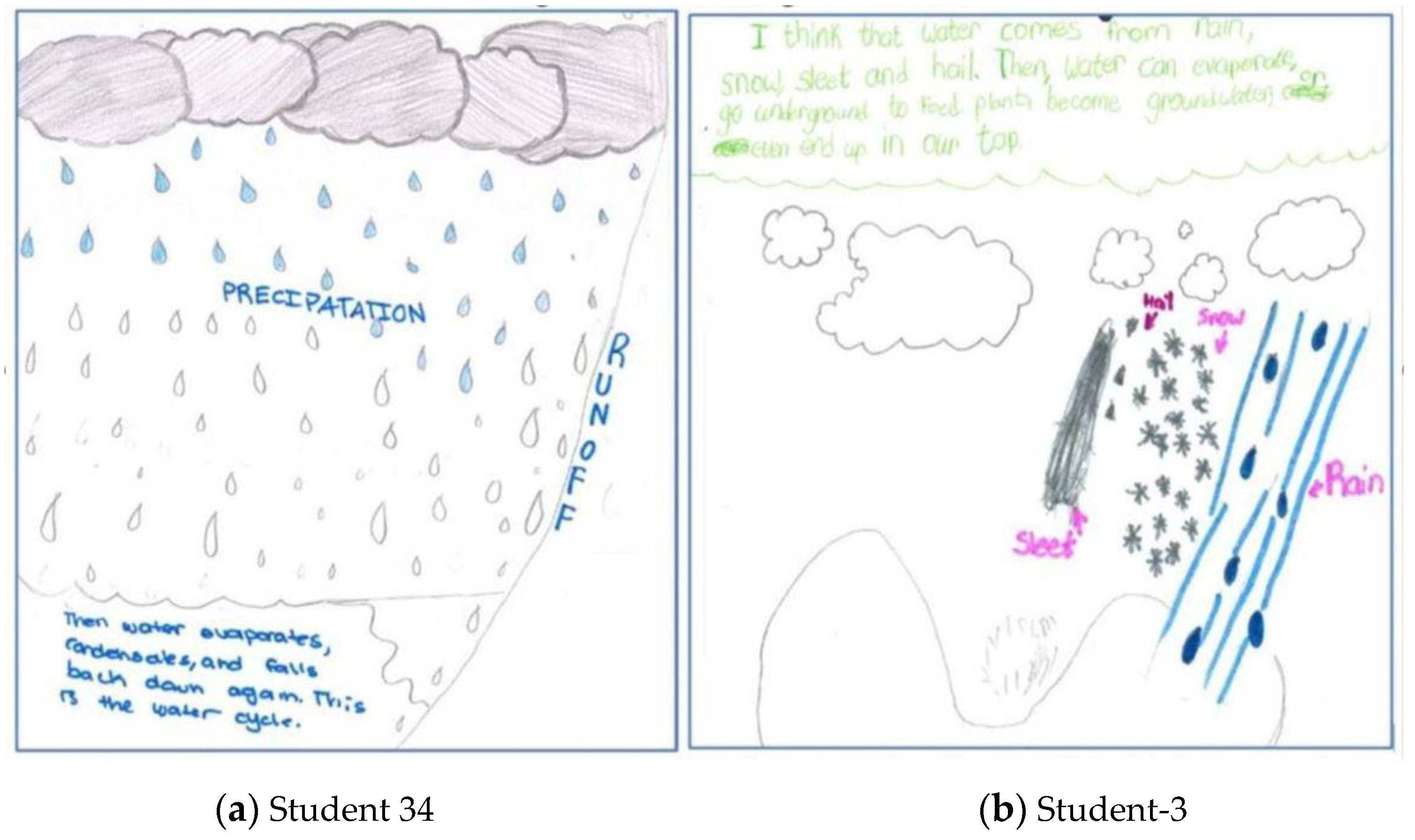
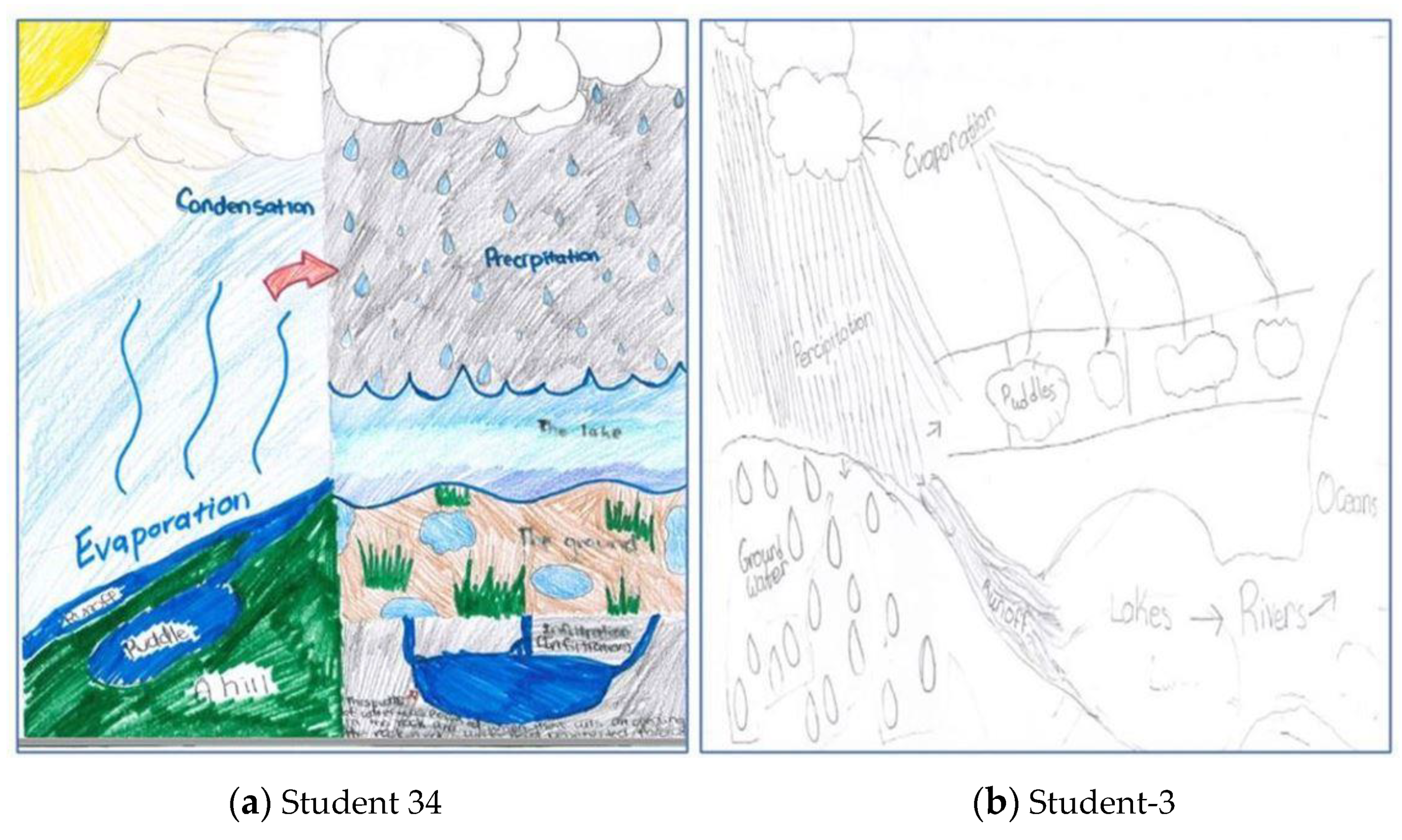
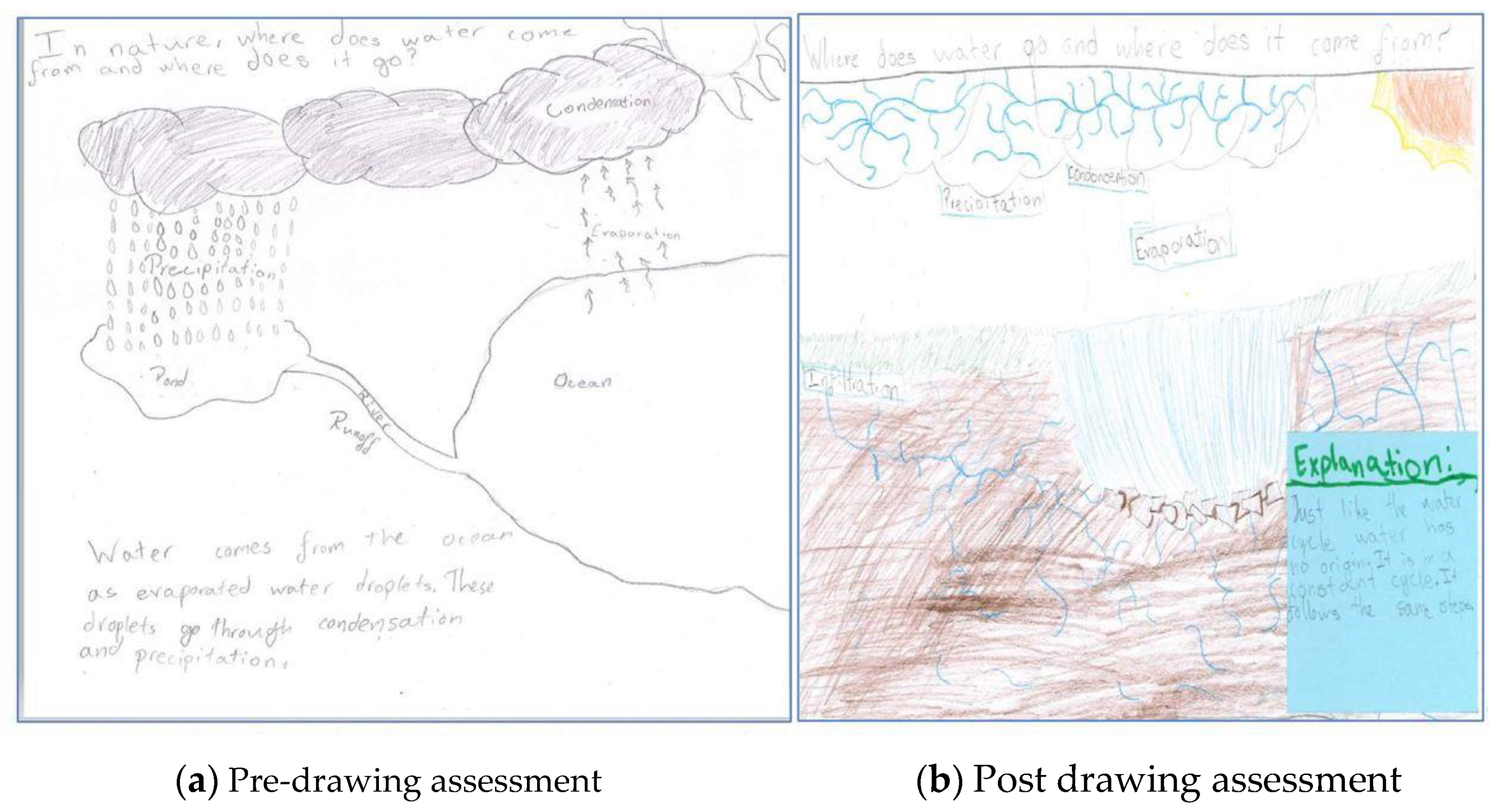
| Lesson # | Experiential Learning Component | Experiential Water Curriculum | Disciplinary Core Idea | Science and Engineering Practices | Cross Cutting Concept |
|---|---|---|---|---|---|
| 1 | Concrete Experience Reflective Observation | Introduction to Field Sampling: Field Sampling at Bronx River | Abiotic Factors, Water Quality, Hydrology | Planning and Carrying Out Investigations, Analyzing and Interpreting Data | Energy and Matter, Patterns, Stability and Change |
| 2 | Concrete Experience Reflective Observation Abstract Conceptualization | Using Field Data: Field Sampling at Hallett’s Cove Abiotic Factors Laboratory | Abiotic Factors, Water Quality, Hydrology | Planning and Carrying Out Investigations, Analyzing and Interpreting Data | Energy and Matter, Patterns, Stability and Change, Cause and Effect, |
| 3 | Concrete Experience Reflective Observation Abstract Conceptualization Active Experimentation | Earth Materials Laboratory:Exploring Permeability and Porosity in Earth Materials | Hydrology, Earth Science | Planning and Carrying Out Investigations, Analyzing and Interpreting Data | Patterns, Scale, Proportion & Quantity, Cause and Effect |
| 4 & 5 | Concrete Experience Reflective Observation Abstract Conceptualization Active Experimentation | System Modeling Laboratory: Design and Redesign of Water Filtration Models Using Earth Materials | Engineering Design, Model Based Inquiry, Hydrology, Earth Science | Developing and Using Models, Planning and Carrying Out Investigations, Constructing Explanations and Designing Solutions | Patterns, Scale, Proportion & Quantity, Cause and Effect, Systems and System Models |
| Characteristic | Measure |
|---|---|
| Grade levels served | K-8 |
| Total enrollment | 370 |
| 6th grade enrollment | 90 |
| % of students qualifying for free or reduced-price lunch | 100% |
| % of Asian students | 43% |
| % of Black students | 6% |
| % of Hispanic students | 9% |
| % of White students | 32% |
| % of students designated as Limited English | 1% |
| % of students with Special Needs | 6% |
| % of teachers with fewer than 3 years of teaching | 40% |
| Experiential Approach | Emergent Themes |
|---|---|
| Active experimentation | Changed filter to have more gravel: addition of gravel to block sand addition of gravel to trap soil and dirt |
| Abstract conceptualization | Gravel most porous Gravel blocks dirt Sand cleaned the water Addition gravel under sand = stopped the sand from seeping into the water/More gravel eradicates sediments Rate/Time: Addition of gravel and sand = slowed down the flow- travel time for water through the filter (flow rate/time) flow rate slow because of all the layers Water Quality = the more gravel there is the cleaner to water will be color change as indicator of water quality = purifies water Layers: thin layers for success; flow rate slow because of all the layers |
| Question # | Concept | Level | Question Type |
|---|---|---|---|
| 1 | Water Cycle | Low | Multiple Choice |
| 2 | Earth Science | High | Multiple Choice |
| 3 | Biotic Factors | Low | Multiple Choice |
| 4 | Earth Science | High | Multiple Choice |
| 5 | Environmental Science | Intermediate | Open |
| 6 | Water Chemistry | Low | Multiple Choice |
| 7 | Hydrology | High | Multiple Choice |
| 8 | Water Cycle | Intermediate | Open |
| 9 | Water Cycle | Intermediate | Multiple Choice |
| 10 | Earth Science | High | Multiple Choice |
| 11 | Water Cycle | Intermediate | Multiple Choice |
| 12 | Earth Science | Intermediate | Open |
| 13 | Hydrology | High | Multiple Choice |
| 14 | Environmental Science | Intermediate | Multiple Choice |
| 15 | Biotic Factors | Low | Open |
| 16 | Hydrology | High | Multiple Choice |
| 17 | Water Filtration | Intermediate | Multiple Choice |
| 18 | Water Filtration | Intermediate | Multiple Choice |
| 19 | Water Cycle | Low | Multiple Choice |
| 19 | Water Filtration | Intermediate | Multiple Choice |
| 20 | Water Cycle | Low | Multiple Choice |
| 21 | Water Engineering | Intermediate | Open |
| 20.1 | Hydrology | High | Open |
| 21.1 | Hydrology | High | Open |
| 20.2 | Hydrology | High | Open |
| Source of Variation | SS | df | MS | F | p-Value | F Crit |
|---|---|---|---|---|---|---|
| Sample (Class Section) | 267.2232 | 1 | 267.2232 | 6.20595 | 0.014254 | 3.929012 |
| Columns (Test Type) | 40.08036 | 1 | 40.08036 | 0.93082 | 0.336805 | 3.929012 |
| Interaction | 187.7232 | 1 | 187.7232 | 4.359655 | 0.039151 | 3.929012 |
| Within | 4650.393 | 108 | 43.05919 | |||
| Total | 5145.42 | 111 |
Publisher’s Note: MDPI stays neutral with regard to jurisdictional claims in published maps and institutional affiliations. |
© 2020 by the authors. Licensee MDPI, Basel, Switzerland. This article is an open access article distributed under the terms and conditions of the Creative Commons Attribution (CC BY) license (http://creativecommons.org/licenses/by/4.0/).
Share and Cite
Levy, A.R.; Moore Mensah, F. Learning through the Experience of Water in Elementary School Science. Water 2021, 13, 43. https://doi.org/10.3390/w13010043
Levy AR, Moore Mensah F. Learning through the Experience of Water in Elementary School Science. Water. 2021; 13(1):43. https://doi.org/10.3390/w13010043
Chicago/Turabian StyleLevy, Amanda R., and Felicia Moore Mensah. 2021. "Learning through the Experience of Water in Elementary School Science" Water 13, no. 1: 43. https://doi.org/10.3390/w13010043
APA StyleLevy, A. R., & Moore Mensah, F. (2021). Learning through the Experience of Water in Elementary School Science. Water, 13(1), 43. https://doi.org/10.3390/w13010043





